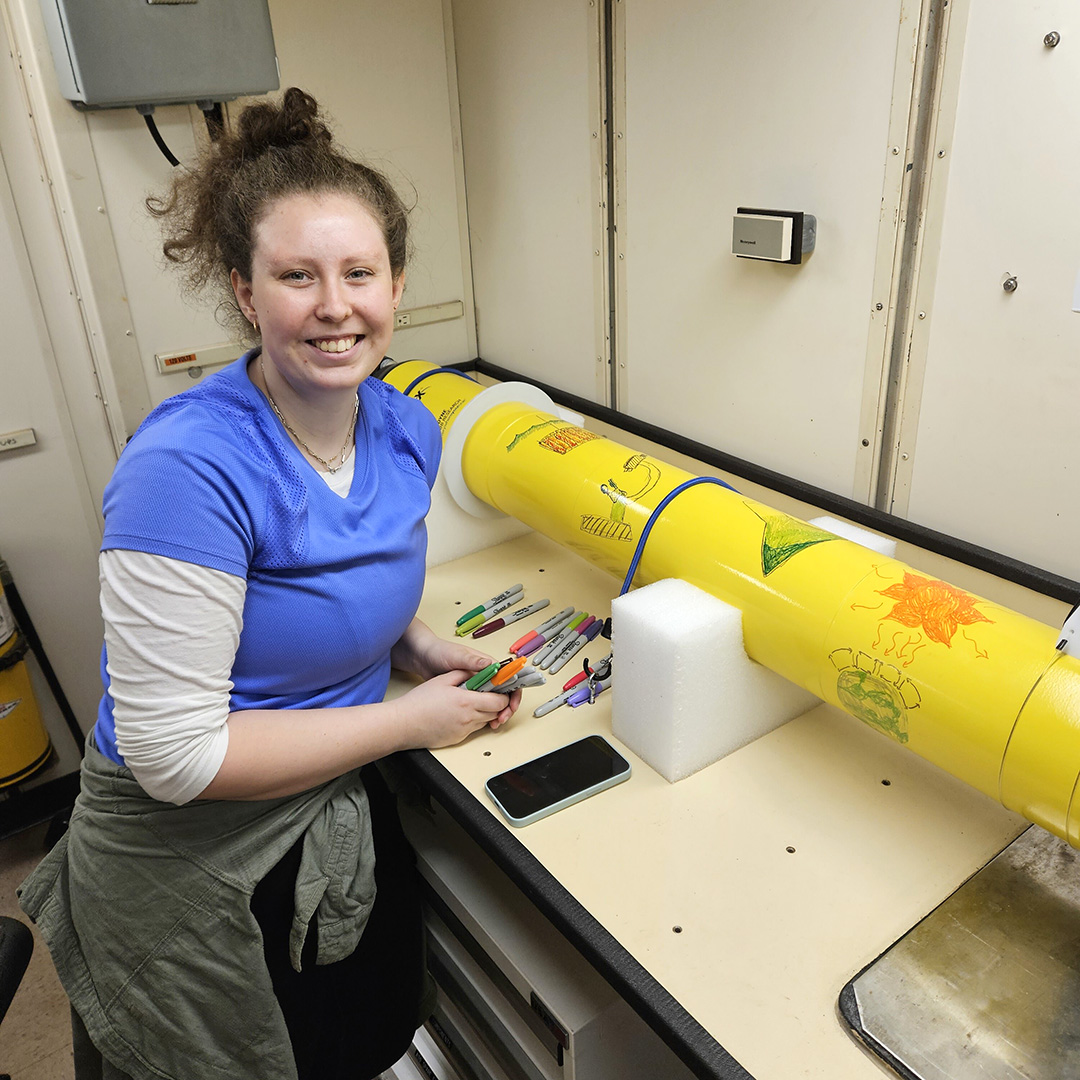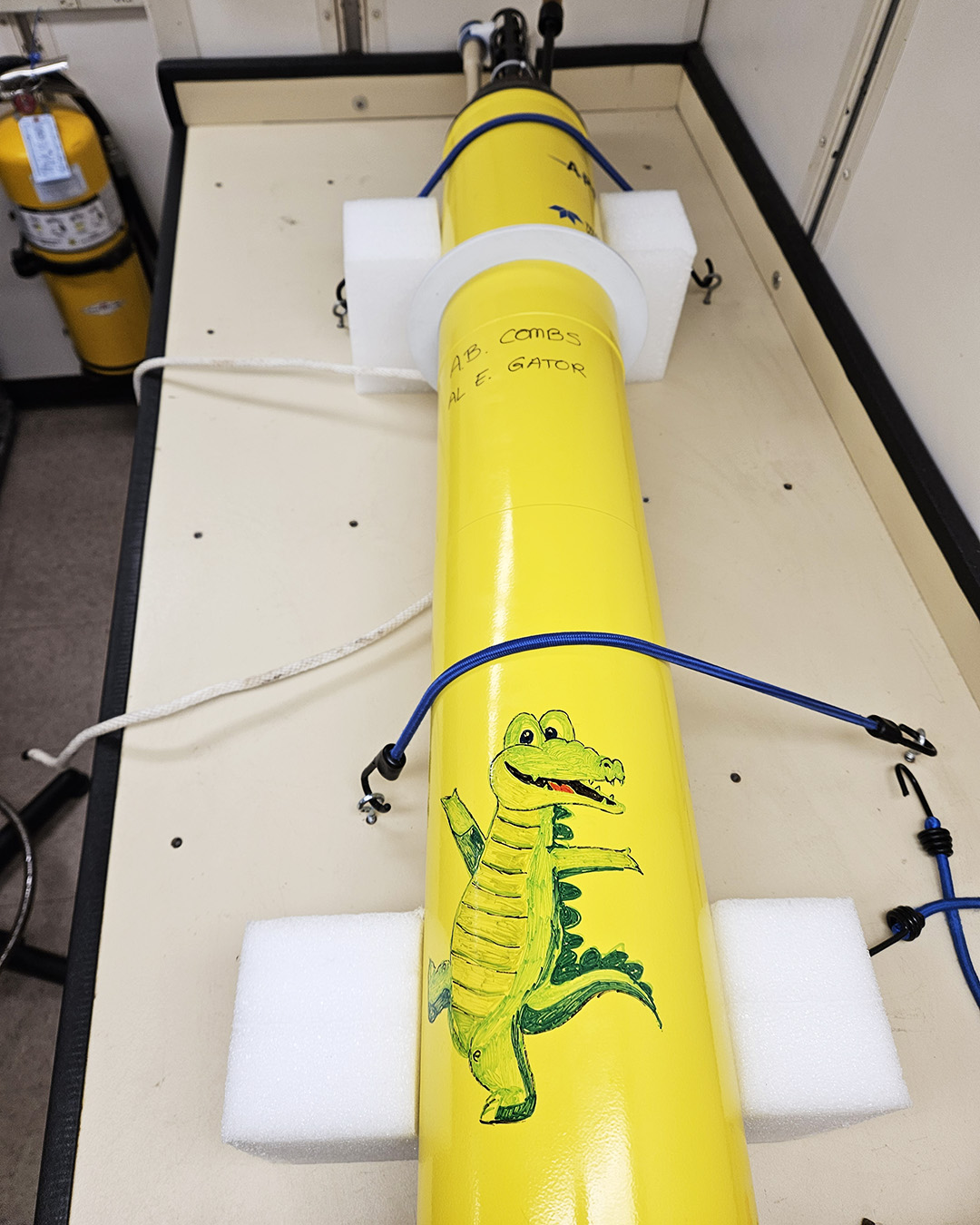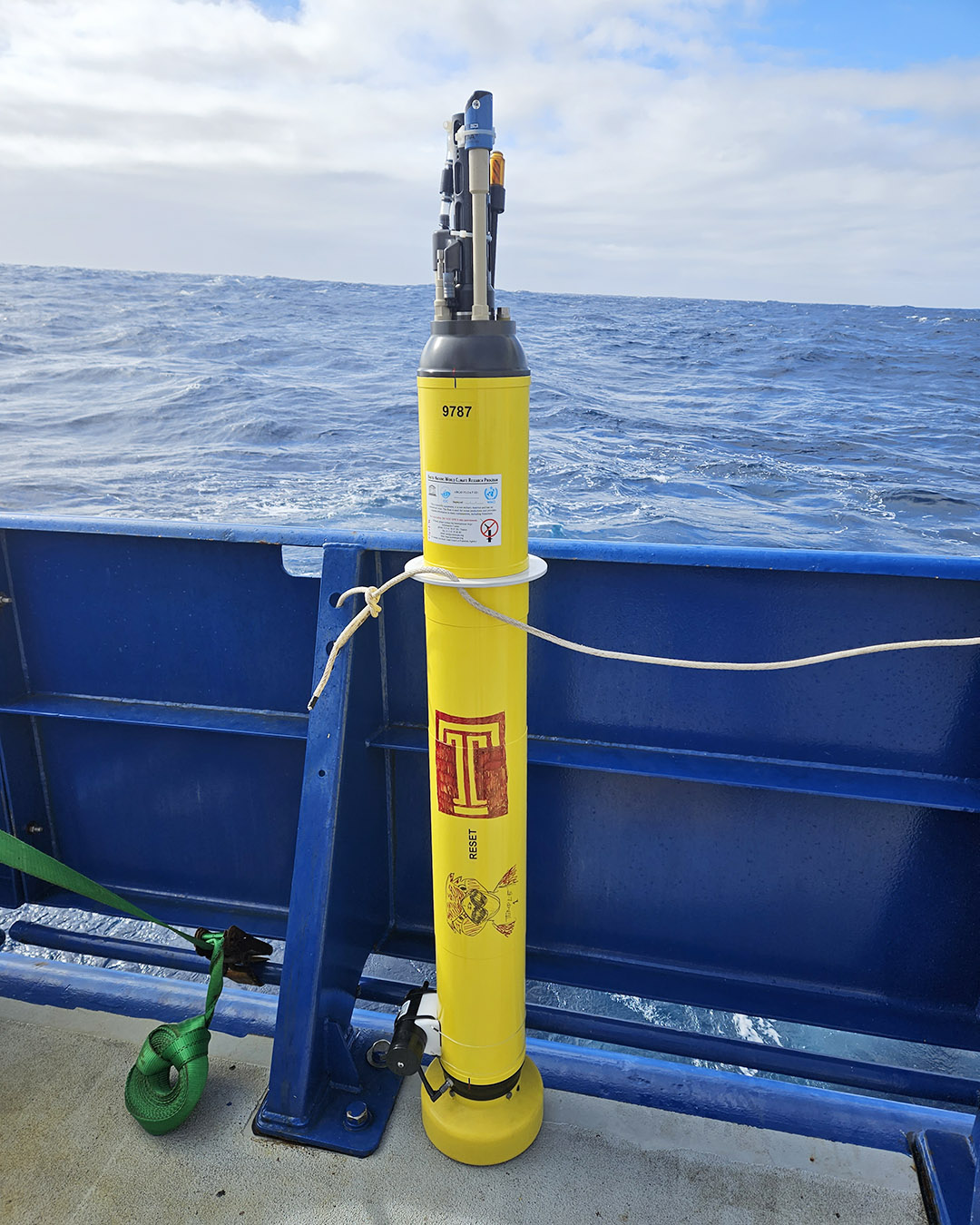GO-SHIP IO5: Launching Floats
The GO-SHIP IO5 expedition launched one GO-BGC and two SOCCOM floats
GO-SHIP I05: Launching Three Adopted Floats
The Adopt-A-Float program is run by GO-BGC but includes floats from the SOCCOM project as well. You can find out more about how to adopt-a-float here.
The Global Ocean Biogeochemistry (GO-BGC) Array is a project funded by the US National Science Foundation to build a global network of chemical and biological sensors that will monitor ocean health. Scientists at the Monterey Bay Aquarium Research Institute, the University of Washington, Scripps Institution of Oceanography, Woods Hole Oceanographic Institution, and Princeton University will use this grant to build and deploy 500 robotic ocean-monitoring floats around the globe as part of NSF’s Mid-scale Research Infrastructure-2 program. In addition to NSF support, the US contribution to the Core-Argo array and the US Argo Data Center are supported by NOAA. These contributions provide a conduit for GO-BGC data into the Argo system. Development of the SIO BGC-SOLO II float for GO-BGC and the Argo community was supported by the US National Oceanographic Partnership Program and by NASA. The GO-BGC Array is led by Director Ken Johnson and administered by the Monterey Bay Aquarium Research Institute, and is supported by NSF Award 1946578.
The Southern Ocean Carbon and Climate Observations and Modeling (SOCCOM) program is an initiative funded by the National Science Foundation’s Division of Polar Programs and headquartered at Princeton University. The project was launched in September 2014 and received an additional 4 years of funding in 2019. SOCCOM draws on the strengths of teams of investigators across the U.S. as well as participating in international observational and simulation efforts. SOCCOM is supported by the National Science NSF Award PLR-1425989 and OPP-1936222, with additional support from NOAA and NASA.
Adopted Floats
The first float launched was The Excelerator, which was adopted by the Excel Center of Columbia in Columbia, MO. The Excel Center High School is an adult high school with students ranging from 21 to 71 years old and they want to accelerate science by gathering data. Most of the students missed out on experiencing field trips and hands-on-science as kids, so they are very eager to take part in this activity and explore the data coming back from their float and other floats.
The second float, A.B. Combs Al E. Gator, was adopted by the A.B. Combs Leadership Magnet Elementary 2nd grade English as a Second Language class. They chose this name because Al E. Gator is their mascot!
The third float launched at station 51 was named Hooter the Owl and the artwork was done by Kristin Petzer (logo) and Alexis Merk (owl). Hooter the Owl was adopted by Temple University in Philadelphia, PA and will be used by university students taking a climate change course. The time-lapse video of the deployment is really nice.




